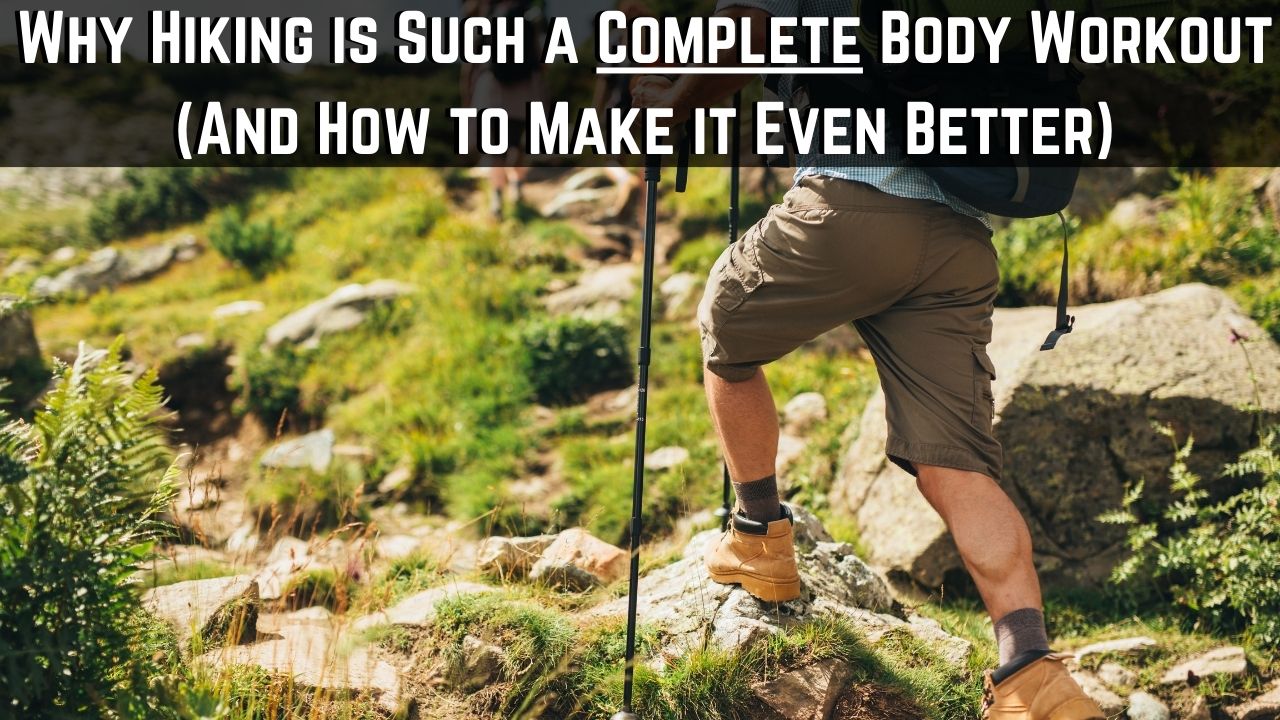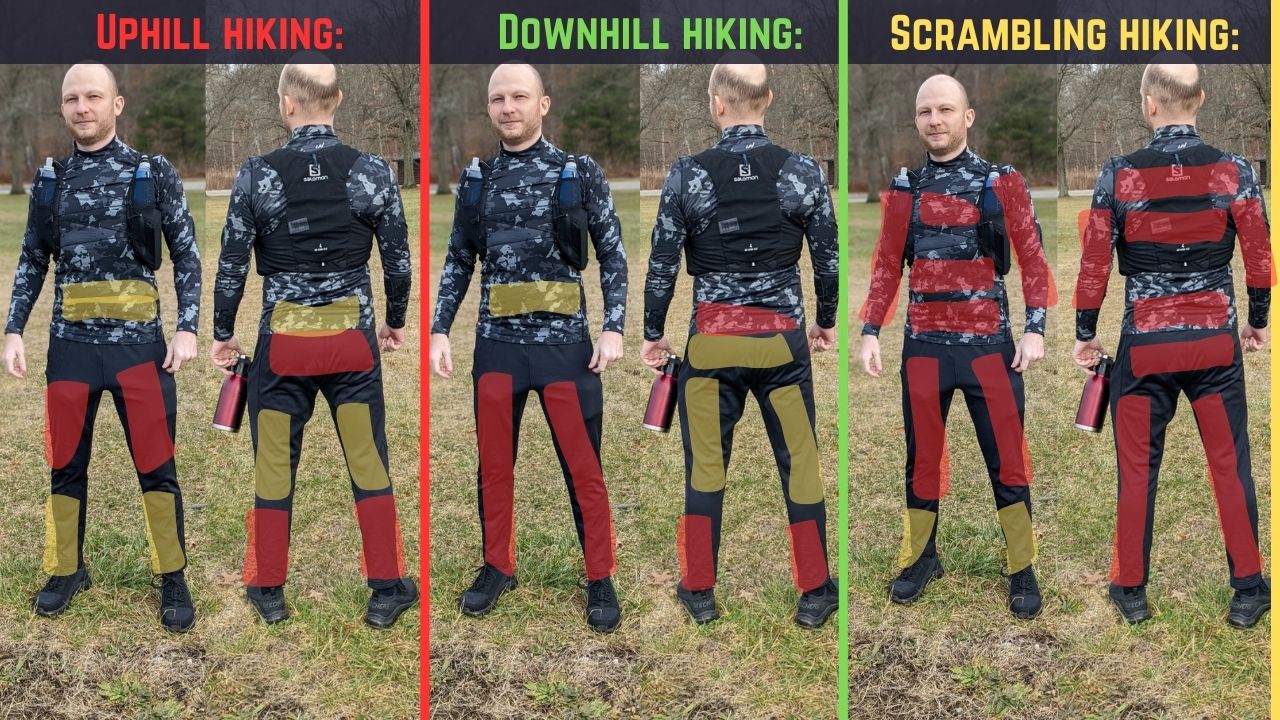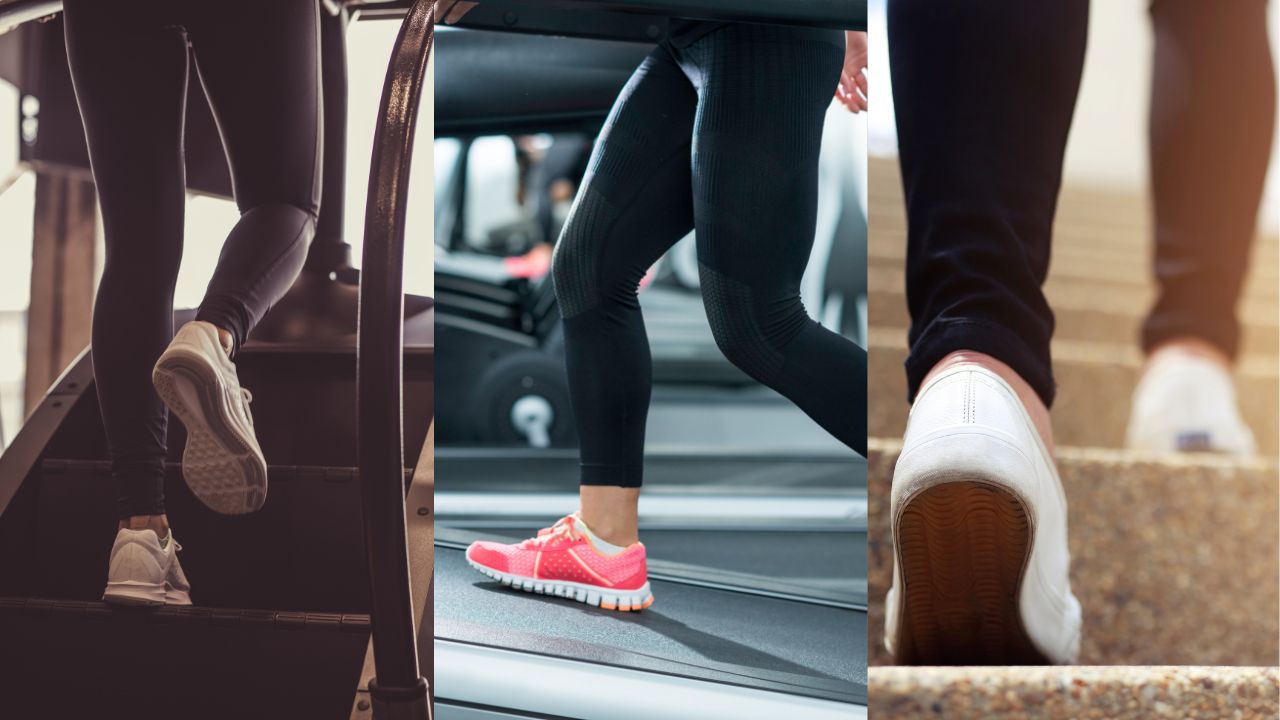This is Why is Hiking Such a Complete Lower Body Workout

The main reason why hiking is such a complete lower body workout is simple because multiple muscle groups are simultaneously activated when you’re moving up or downhill and here they are:



- Calves (front and back)
- Glutes (all 3 groups that comprise them)
- Thigh muscles
- Knees
- Lower core muscles
- Lower back muscles

Hiking upward vs downward impacts the lower muscle groups differently too:

- When you hike upward, you’ll typically activate all of the above muscles but more focus will be on your calves, glutes, knees, thighs and lower core muscles.
- When you hike downward, you’ll also activate the same muscle groups but there will now be a more “impact” effect on your knees, front calves and lower back. Sometimes these impacts can cause injuries so it’s important to hike slowly when going down to improve the effect the lower body workout.
- When you’re scrambling/climbing, you will still activate the same muscles but the difference in this type of hike is that your upper body muscles will now be activated too, plus there will also be more effect on your thighs and calves during this activity.
The intensity of the hike matters a lot:
Hiking on a flat surface vs say hiking up a 45 degree angle are totally different hiking experiences and the 45 degree option will obviously be a much tougher and more effective workout on your lower body whereas the flat surface hike will be more of a gradual walk that likely doesn’t even activate the lower core or back muscles much, let alone the legs and calves. The speed at which you move also has a huge impact on how the hike affects your lower body muscles too. Tips: If you’re looking to really give you lower body a serious workout, then try to find hikes with either higher elevations that require you to lean forward or scramble to reach the top and/or hikes with changeups meaning trails that mix things up where you may start on a flat walk, then move up, then down, scramble a bit. All of these elevation changeups constantly keep activating and reactivating different muscle groups with different intensity levels, thereby making the exercise that much more effective. If you’re a beginner hiker, look for hikes on apps like Alltrails that have less than 500 feet of total elevation. If you’re more of an experienced hiker and in shape, aim for 1,000 or above elevation trails. Adding a backpack with water and other things to bring on a hike will basically be an extra weight on your entire hiking workout and thus provide an even better lower body workout (be careful with this because it will add more strain on your lower back muscles). In addition to that the weight also helps activate upper body muscles as well (shoulders but it does put strain on the lower back).3 alternative workouts to hiking that also activate the same muscle groups:
For me personally it’s tough to hike every single day since I live in NYC and the best hikes near NYC are typically 2 or more hours away, so when I’m not engaged in that what I’ll typically do is find alternative exercises and workouts that basically activate the same muscle groups and here are my top choices:
- Stair master: This is a common machine I use, but I highly recommend you avoid using your hands when walking on it. This adds more intensity to your upwalks.
- Treadmill (on incline): This is also something I’ll do before/after a stairmaster workout. Treadmills are good for walks/jogs but some have the option to add degrees of incline and when they are more raised, the same walk/jog becomes a lot tougher and basically replicates a lot of trails I follow. The machine I use can go up to a 20 degree incline and I’ll typically stay on that until it says I reached 1,000 feet in elevation.
- Walking up the stairs: This is basically stairmaster but without the machine and I personally think it’s way more effective. If you can walk up the stairs often every day, not only will you be better prepared for a hike but you’ll also be getting all of the lower body workout benefits of a hike, just outside that enviornment (try to avoid using the handles as it makes it easier).
